Fire Service Line of Duty Deaths
July 9, 1943 - 10 Chicago Firefighters killed at Superior St. fire.
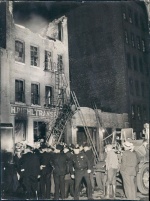
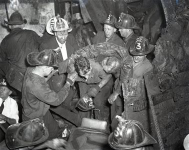
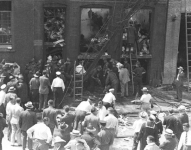
On July 8 and 9, 1943, twin fires in a four-story manufacturing building at 149 West Superior Street led to the deaths of ten Chicago firefighters. The Chicago Fire Department received the initial alarm around 8:30 PM on July 8, 1943, reporting that a fire had broken out on the second story of the building. Captain Arthur Barcal, acting chief of the 2nd Battalion, was first on-scene officer and led the battalion into the building to douse the flames. Barcal soon called in another alarm, and Marshal Adelbert White of the 1st Division responded with additional firefighters and equipment. The fire was soon extinguished and the firefighters returned to their stations. No firefighters remained on scene to patrol the area due to a wartime personnel shortage.
Several hours later, a second fire was discovered on the fourth floor of the building, and at 1:59 AM on July 9, 1943, the second alarm was received by the Chicago Fire Department. Under the command of White, firefighters again entered the burning building with hose lines and were stationed on the stairwell landings. White soon realized that the building was on the verge of collapsing and ordered the firefighters to evacuate the building, but the roof collapsed before they could escape. The firefighters on the landings fell with the stairs, and many of them ended up trapped in the basement by timber, bricks, and other debris.
A portion of the building structure remained in place and, despite the threat of the bulging and cracking walls, firefighters immediately raced to free their comrades from the debris. Fire Commissioner Michael J. Corrigan explained the fragile environment by stating, “Every man here is taking his life in his hands to save his buddy. Each of them in a few seconds might be in a worse position than the men they are trying to save.” After some time, however, the fire officers determined that it was too great a risk to continue removing debris from the structure as part of their rescue efforts. The firefighters also shut off most of their hoses, hoping to avoid further collapse of the structure. While waiting to find a safer way to rescue the trapped firefighters, the fire department dropped morphine down through the debris to the trapped firefighters.
The fire department eventually decided to drill holes into the basement walls in an effort to reach the trapped firefighters. At 8:30 AM, six hours after the initial collapse of the building, the first body, that of Firefighter Harry Weinel of the Chicago Fire Insurance Patrol, was recovered. Over the next six hours, rescuers were able to extract both survivors and victims from the wreckage. The body of Captain Barcal was the last to be recovered at around 1:40 PM. Firefighters Robert Walsh and Richard Jablonski were pulled out of the debris alive, but died on the way to the hospital, while Firefighter Joseph Strenski died a few days later in the hospital. Arthur W. Hampel of the Chicago Fire Insurance Patrol also died from injuries sustained in the collapse. In the end, ten firefighters died and numerous others were injured.
Investigations showed that firefighters had responded to two other alarms at the building in the months prior to July 1943, but no major concerns had been raised. The cause of the fatal fire was eventually determined to be related to a chimney leak from an incinerator in the basement of an adjoining building. The chimney was located between the walls of the two buildings and had been punctured by a joist support. Investigations also determined that paper cartons on the fourth floor of the building had contributed to the collapse of the building as the company on that floor had exceeded the maximum weight limit for its storage area.
The men that were lost that day:
Captain Henry Wurthman of Truck Co. 9
Captain Arthur Barcal of Engine Co. 14, acting chief of the 2nd Battalion.
Captain Matthew McDonough, Squad 1
Lieutenant Edward Moffett of Truck Co. 3
Fireman Thomas McCarthy of Engine Co. 12
Fireman Robert Walsh of Squad Co. 1
Fireman Richard Jablonski of Truck Co. 2
Firefighter Joseph Strenski
Firefighter Harry Weinel, Chicago Fire Insurance Patrol
Firefighter Arthur W. Hampel, Chicago Fire Insurance Patrol
Photo: Lieutenant Edward Moffett and Fireman Joseph Strenski
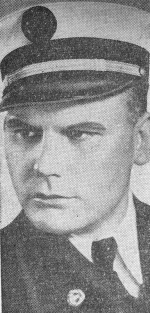
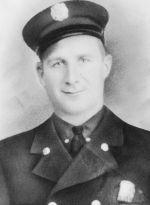
RIP. Never forget.
Last edited:


